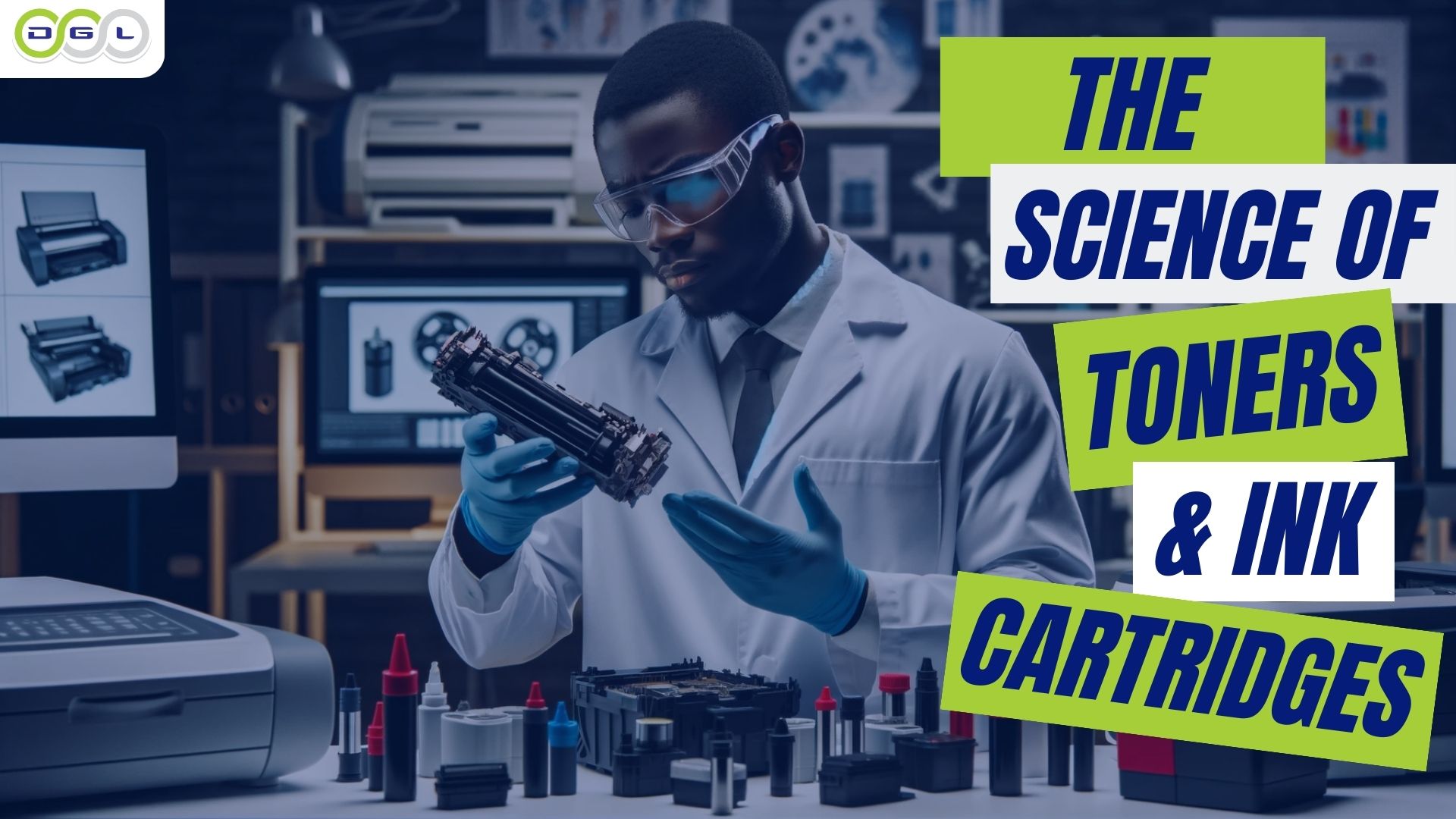Introduction
In our digital age, the significance of printers in both professional and personal settings is undeniable. Central to every printer’s function are the toners and ink cartridges, which are marvels of modern printing technology. These components are pivotal in producing high-quality prints, influencing both the clarity and color vibrancy of the printed material. In this comprehensive guide, we will uncover the intricate science behind toners and ink cartridges. By understanding their composition, mechanics, and impact on print quality, we can appreciate the complexities involved in what seems like a simple printout. This knowledge also empowers users to make more informed decisions regarding their printing needs, ensuring both cost-effectiveness and quality.
Composition and Types
Toners: Toners are the lifeblood of laser printers and copiers. Contrary to popular belief, toner is not just a simple powder but a sophisticated composition. It mainly consists of finely ground plastic particles, carbon, and coloring agents (usually based on the CMYK color model). The plastic used is typically a type of polyester, which is crucial for the toner’s ability to melt and fuse to paper under heat. Modern toners may also contain additives that enhance print quality and ensure the even distribution of particles.
Ink Cartridges: Ink cartridges are the key components of inkjet printers. These cartridges contain liquid ink, which is either dye-based or pigment-based. Dye-based inks offer vibrant colors and are excellent for high-resolution photographs, but they can be prone to fading and smudging. Pigment-based inks, on the other hand, are more resistant to environmental factors like sunlight and moisture, making them ideal for prints that require longevity. The solvent in these inks plays a crucial role in maintaining the right viscosity and flow rate, ensuring precise and uniform application on the paper.
How They Work
Toners: The operation of a toner cartridge within a laser printer is a fascinating process that combines physics and chemistry. It starts with the drum unit being charged with static electricity. When a document is sent to the printer, a laser beam selectively discharges certain areas of the drum to form an image. These areas attract the toner particles, which are then rolled onto the paper. Finally, the paper passes through a fuser unit where heat (up to 200°C) and pressure are applied. This process melts the plastic in the toner, fusing the particles onto the paper to create a permanent image.
Ink Cartridges: Inkjet printers, using ink cartridges, operate on a different principle. They utilize microscopic nozzles to spray ink onto the paper. This method allows for a high degree of precision, enabling intricate images and texts to be printed with remarkable clarity. The printer controls the exact placement and size of these ink droplets, a process that is key to achieving the desired resolution. After being deposited on the paper, the ink quickly dries, absorbing into the paper’s fibers, resulting in a sharp, clean print.
Environmental Considerations
The environmental impact of toners and ink cartridges is a growing concern. The manufacturing process, usage, and disposal of these items have significant ecological implications. In response, many manufacturers and environmental groups advocate for recycling programs. Users are encouraged to participate in these initiatives by returning used cartridges, thus reducing the amount of waste sent to landfills. Additionally, there is a growing market for recycled and refillable cartridges, which not only minimizes waste but also reduces the carbon footprint associated with the production of new cartridges. This eco-friendly approach is not just beneficial for the environment but can also be cost-effective for the users.
Choosing the Right Type
Selecting the appropriate type of printer and cartridge depends largely on the intended use. For printing text-heavy documents, laser printers with toner cartridges are usually the best choice. They offer speed, efficiency, and a lower cost per page. On the other hand, if the priority is high-quality images, inkjet printers with ink cartridges are preferable. They provide superior color depth and gradation, making them ideal for photographs and detailed graphics. However, it’s important to consider the ongoing cost of ink, which can be higher per page compared to toner. For businesses and individuals concerned about the environmental impact, looking into eco-friendly options like recycled or refillable cartridges can be a wise choice, offering a balance between quality, cost, and ecological responsibility.
FAQs
Q1: How long do toner cartridges last compared to ink cartridges? A: Toner cartridges generally have a longer lifespan than ink cartridges. They can print thousands of pages before needing replacement, making them ideal for environments with high-volume printing.
Q2: Can using third-party cartridges damage my printer? A: While third-party cartridges offer a cost-effective alternative, they can sometimes cause compatibility issues or lower print quality. It’s important to purchase from reputable suppliers to avoid potential damage to your printer.
Q3: Are there environmentally friendly options for toners and ink cartridges? A: Yes, many manufacturers now offer recycled or refillable cartridges. These options not only reduce environmental impact but can also be more economical in the long run.
Conclusion
Understanding the science behind toners and ink cartridges is crucial for anyone who uses a printer regularly. This knowledge not only helps in choosing the right printer and cartridges for specific needs but also in adopting more environmentally friendly practices. With advancements in technology, the quality and efficiency of printing continue to improve, offering users a wide range of options tailored to their requirements. Whether it’s for a small home office or a large business, the right choice in printing technology can make a significant difference in terms of quality, cost, and environmental impact. Embracing this knowledge will lead to better printing experiences and more responsible use of technology.





